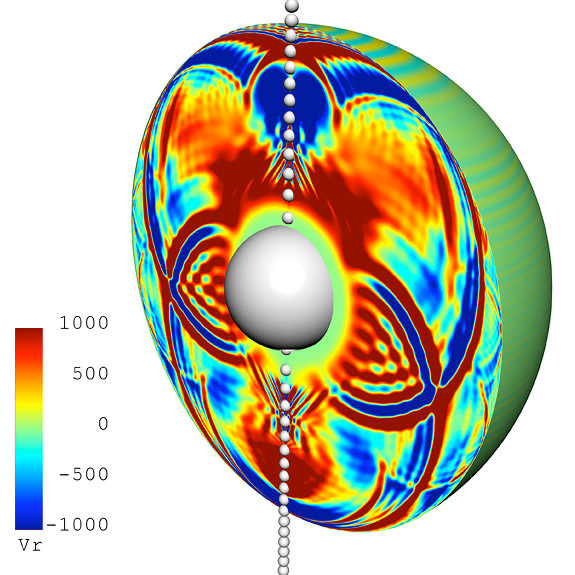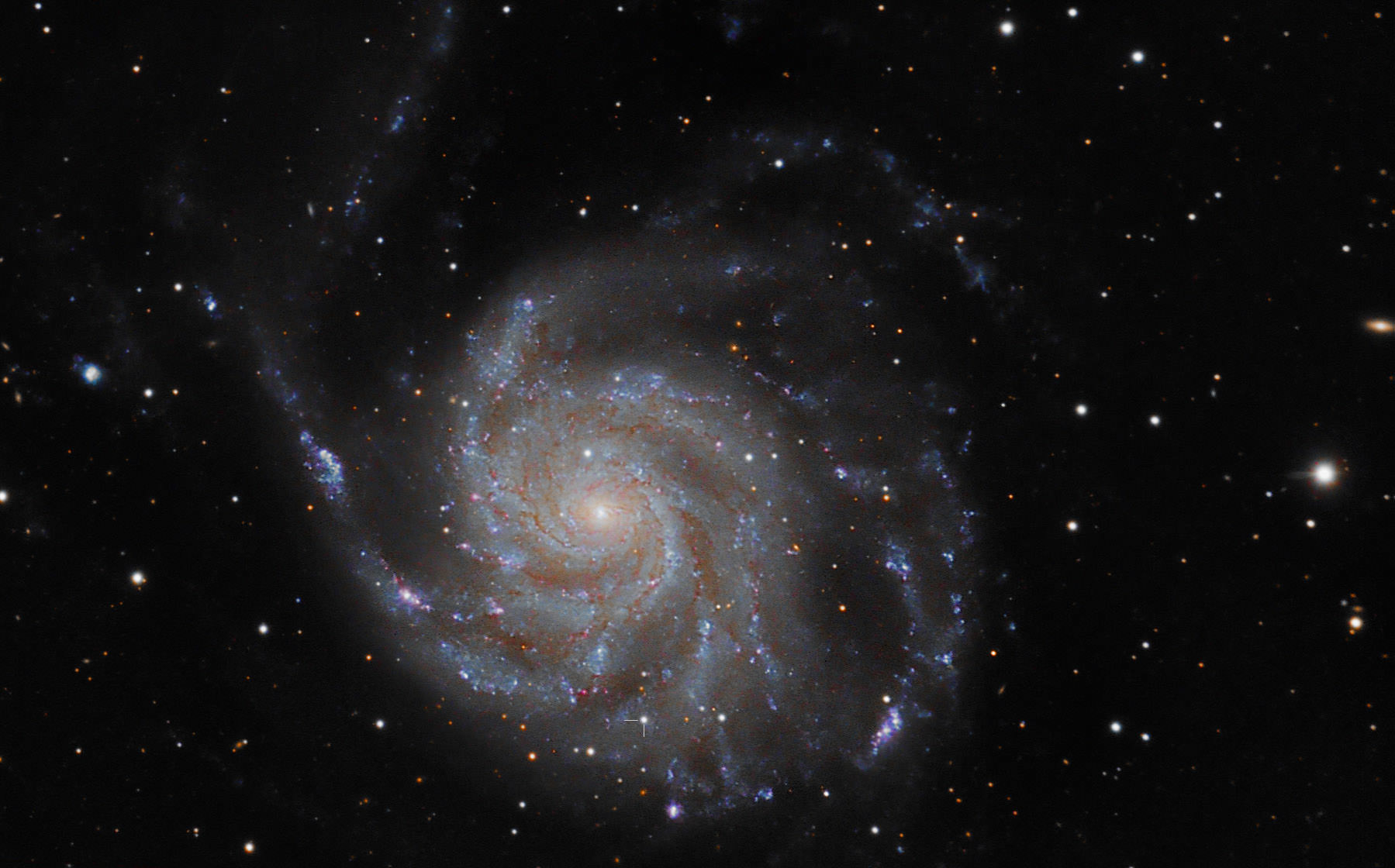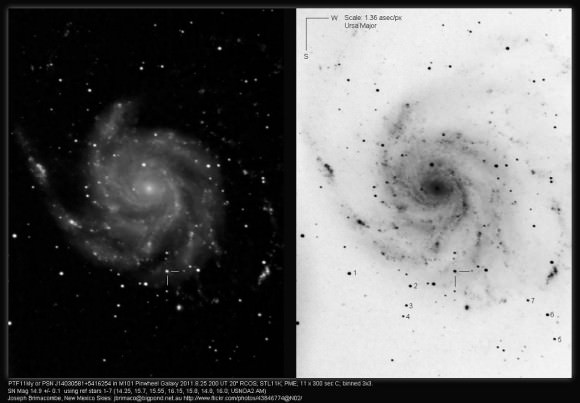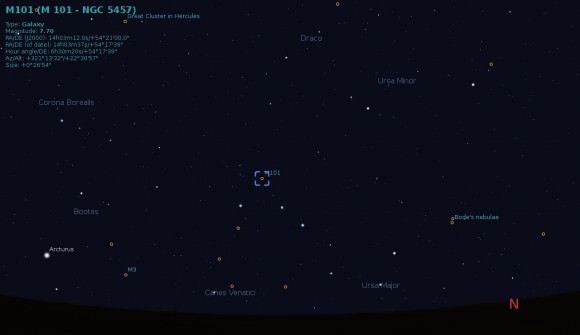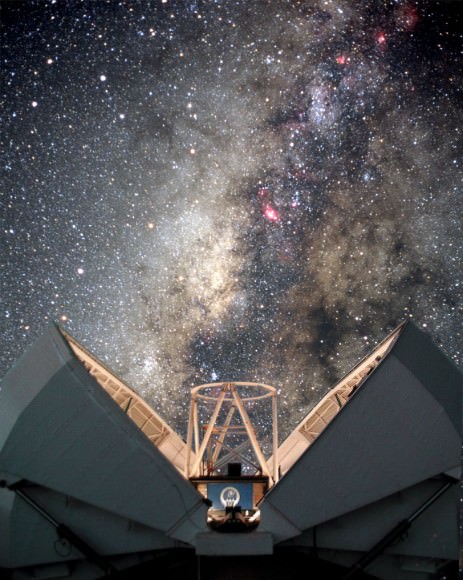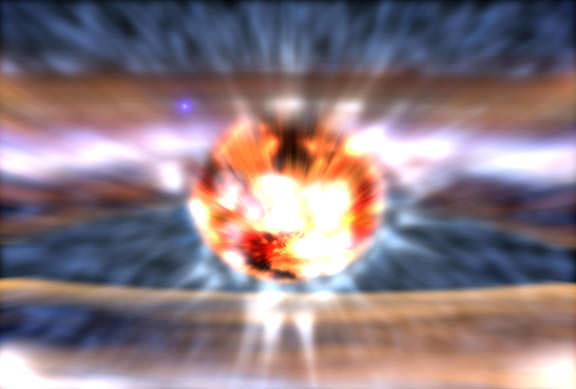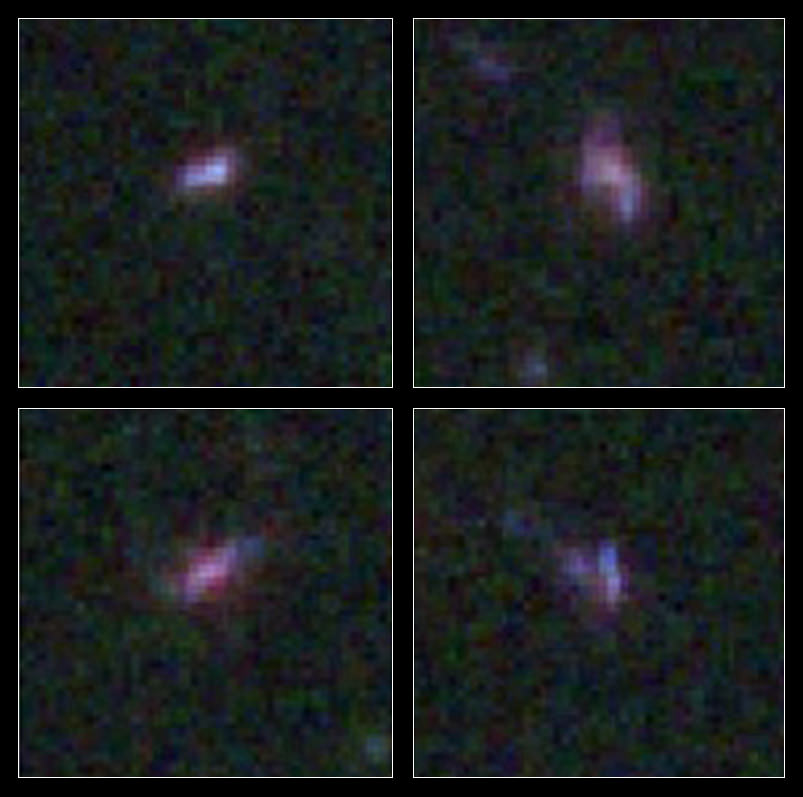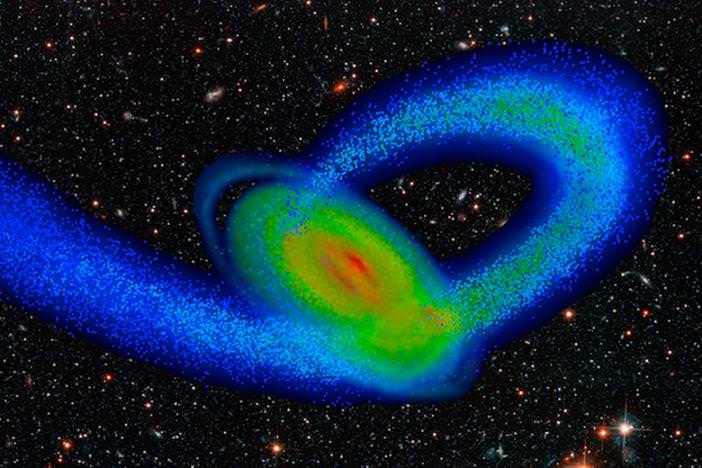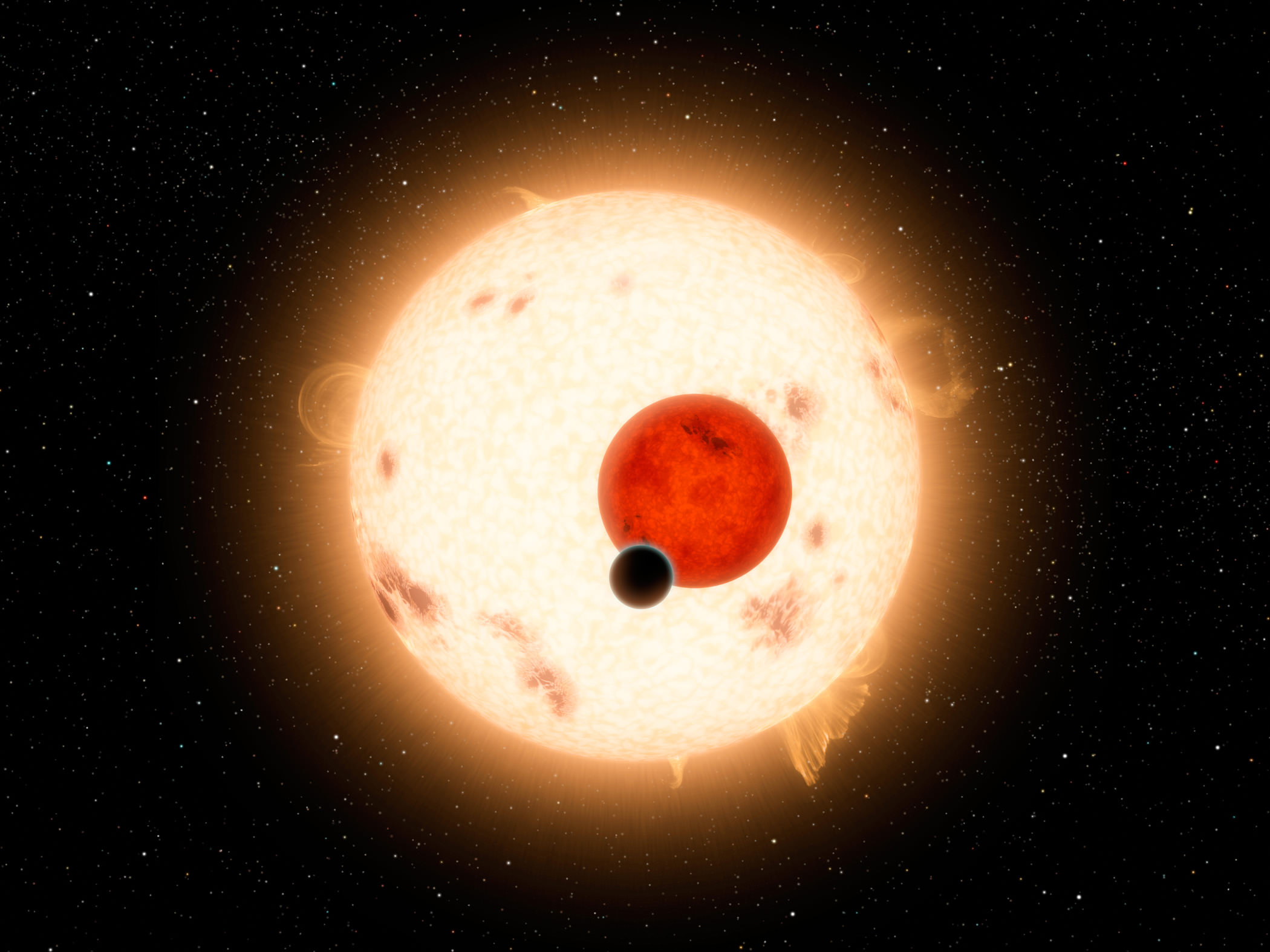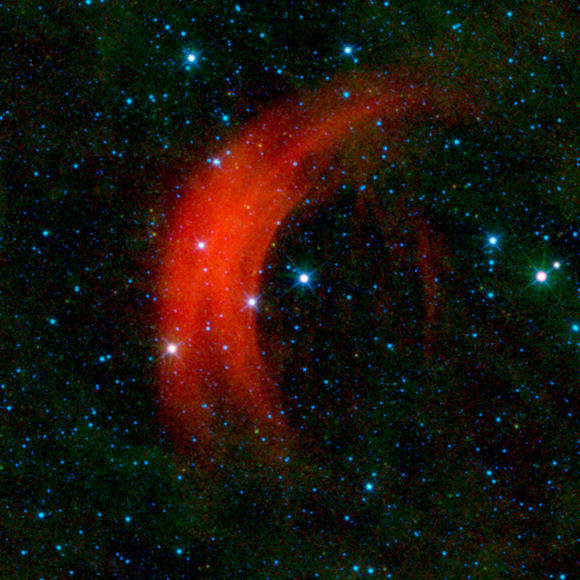[/caption]
Well, we’re off to see the Wizard again, my friends. This time it’s to explore the possibilities of primordial black holes colliding with stars and all the implications therein. If this theory is correct, then we should be able to observe the effects of dark matter first hand – proof that it really does exist – and deeper understand the very core of the Universe.
Are primordial black holes blueprints for dark matter? Postdoctoral researchers Shravan Hanasoge of Princeton’s Department of Geosciences and Michael Kesden of NYU’s Center for Cosmology and Particle Physics have utilized computer modeling to visualize a primordial black hole passing through a star. “Stars are transparent to the passage of primordial black holes (PBHs) and serve as seismic detectors for such objects.” says Kesden. “The gravitational field of a PBH squeezes a star and causes it to ring acoustically.”
If primordial black holes do exist, then chances are great that these type of collisions happen within our own galaxy – and frequently. With ever more telescopes and satellites observing the stellar neighborhoods, it only stands to reason that sooner or later we’re going to catch one of these events. But, the most important thing is simply understanding what we’re looking for. The computer model developed by Hanasoge and Kesden can be used with these current solar-observation techniques to offer a more precise method for detecting primordial black holes than existing tools.
“If astronomers were just looking at the Sun, the chances of observing a primordial black hole are not likely, but people are now looking at thousands of stars,” Hanasoge said.”There’s a larger question of what constitutes dark matter, and if a primordial black hole were found it would fit all the parameters — they have mass and force so they directly influence other objects in the Universe, and they don’t interact with light. Identifying one would have profound implications for our understanding of the early Universe and dark matter.”
Sure. We haven’t seen DM, but what we can see are galaxies that are hypothesized to have extended dark-matter halos and to study the effects the gravity has on their materials – like gaseous regions and stellar members. If these new models are correct, primordial black holes should be heavier than existing dark matter and when they collide with a star, should cause a rippling effect.
“If you imagine poking a water balloon and watching the water ripple inside, that’s similar to how a star’s surface appears,” Kesden said. “By looking at how a star’s surface moves, you can figure out what’s going on inside. If a black hole goes through, you can see the surface vibrate.”
Using the Sun as a model, Kesden and Hanasoge calculated the effects a PBH might have and then gave the data to NASA’s Tim Sandstrom. Using the Pleiades supercomputer at the agency’s Ames Research Center in California, the team was then able to create a video simulation of the collisional effect. Below is the clip which shows the vibrations of the Sun’s surface as a primordial black hole — represented by a white trail — passes through its interior.
“It’s been known that as a primordial black hole went by a star, it would have an effect, but this is the first time we have calculations that are numerically precise,” comments Marc Kamionkowski, a professor of physics and astronomy at Johns Hopkins University. “This is a clever idea that takes advantage of observations and measurements already made by solar physics. It’s like someone calling you to say there might be a million dollars under your front doormat. If it turns out to not be true, it cost you nothing to look. In this case, there might be dark matter in the data sets astronomers already have, so why not look?”
I’ll race you to the door…
Original Story Source: Princeton University News. For Further Reading: Transient Solar Oscillations Driven by Primordial Black Holes.

